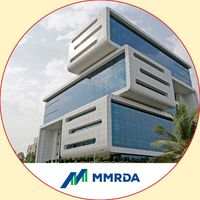Infrastructure Under Pressure: The Road Ahead for Indian Development
August 31, 2024, 4:36 am
India's infrastructure landscape is at a crossroads. Recent reports from CRISIL paint a picture of tempered optimism. Road developers are bracing for a slowdown in revenue growth, projected at a modest 5-7% for the upcoming fiscal year. This is a stark contrast to the robust growth seen in previous years. The reasons are multifaceted, akin to a complex puzzle where each piece represents a different challenge.
Delays in project execution are a significant factor. Like a train stuck at a red signal, projects are often halted by bureaucratic red tape. Rising costs add another layer of complexity. As materials become pricier, profit margins shrink. Developers are feeling the squeeze. The landscape is shifting, and the winds of change are blowing through the sector.
Government policies play a crucial role. They can either act as a catalyst for growth or a barrier to progress. Recent changes in funding mechanisms have left many developers scrambling. The uncertainty creates a ripple effect, impacting financial performance and investment plans. The road ahead is fraught with obstacles, but it is not devoid of opportunities.
Despite the challenges, the infrastructure sector still holds promise. Investment opportunities exist, especially for those willing to adapt. The ability to navigate these turbulent waters will determine who thrives and who falters. Developers must be agile, ready to pivot as market conditions evolve.
Meanwhile, in Kolkata, the East-West Metro has emerged as a lifeline amid civil unrest. As protests erupted on the streets, the metro system became the sole artery connecting Kolkata and Howrah. By 5 PM, it had ferried over 47,000 passengers, far exceeding its average daily ridership. This surge highlights the metro's critical role in urban mobility. It’s a testament to the resilience of infrastructure in the face of adversity.
The East-West Metro is not just a transportation project; it symbolizes hope. In times of chaos, it provides a reliable means of travel. Metro officials anticipate that ridership could surpass the record set on its opening day. This surge in usage underscores the importance of robust public transport systems in urban settings.
In Mumbai, the Mumbai Metropolitan Region Development Authority (MMRDA) is making strides with the tender for Line 4 of the Mumbai Metro Rail Project. This ambitious endeavor spans from Bhakti Park to Mulund Fire Station. The scope of work is extensive, covering everything from design to commissioning. The project is a significant investment in the city’s infrastructure, aiming to alleviate congestion and improve connectivity.
However, the success of such projects hinges on timely execution. Delays can derail progress, leading to increased costs and frustrated commuters. The MMRDA must navigate these challenges carefully to ensure that the project meets its deadlines. Like a well-oiled machine, every cog must turn smoothly for the system to function effectively.
In Patna, the District Magistrate is pushing for expedited land acquisition for the Patna Metro Rail Project. This is a crucial step in ensuring timely project completion. With 75.9 acres already acquired, the focus is on removing obstacles that hinder progress. The urgency is palpable. The faster the land acquisition, the sooner the public can reap the benefits of improved transportation.
Land acquisition is often a contentious issue. It involves negotiations, compensation, and sometimes, public dissent. The District Magistrate's call to action is a reminder of the complexities involved in infrastructure development. It’s a balancing act between progress and public sentiment.
As the infrastructure sector grapples with these challenges, the upcoming 14th RAHSTA Expo in Mumbai will serve as a platform for discussion and innovation. Scheduled for October 9 and 10, 2024, the expo will bring together industry leaders to explore solutions. It’s an opportunity to share insights and strategies for overcoming the hurdles that lie ahead.
In summary, the road ahead for Indian infrastructure is fraught with challenges but also ripe with opportunities. The projected slowdown in revenue growth for road developers signals a need for adaptation. As the East-West Metro in Kolkata demonstrates, infrastructure can be a lifeline in turbulent times. Meanwhile, projects in Mumbai and Patna highlight the ongoing efforts to enhance urban mobility.
The key to success lies in effective management of challenges. Developers must remain vigilant, ready to pivot as conditions change. Government policies will continue to shape the landscape, and the ability to navigate these dynamics will determine the future of infrastructure in India. The journey may be rocky, but with resilience and innovation, the destination can be bright.
Delays in project execution are a significant factor. Like a train stuck at a red signal, projects are often halted by bureaucratic red tape. Rising costs add another layer of complexity. As materials become pricier, profit margins shrink. Developers are feeling the squeeze. The landscape is shifting, and the winds of change are blowing through the sector.
Government policies play a crucial role. They can either act as a catalyst for growth or a barrier to progress. Recent changes in funding mechanisms have left many developers scrambling. The uncertainty creates a ripple effect, impacting financial performance and investment plans. The road ahead is fraught with obstacles, but it is not devoid of opportunities.
Despite the challenges, the infrastructure sector still holds promise. Investment opportunities exist, especially for those willing to adapt. The ability to navigate these turbulent waters will determine who thrives and who falters. Developers must be agile, ready to pivot as market conditions evolve.
Meanwhile, in Kolkata, the East-West Metro has emerged as a lifeline amid civil unrest. As protests erupted on the streets, the metro system became the sole artery connecting Kolkata and Howrah. By 5 PM, it had ferried over 47,000 passengers, far exceeding its average daily ridership. This surge highlights the metro's critical role in urban mobility. It’s a testament to the resilience of infrastructure in the face of adversity.
The East-West Metro is not just a transportation project; it symbolizes hope. In times of chaos, it provides a reliable means of travel. Metro officials anticipate that ridership could surpass the record set on its opening day. This surge in usage underscores the importance of robust public transport systems in urban settings.
In Mumbai, the Mumbai Metropolitan Region Development Authority (MMRDA) is making strides with the tender for Line 4 of the Mumbai Metro Rail Project. This ambitious endeavor spans from Bhakti Park to Mulund Fire Station. The scope of work is extensive, covering everything from design to commissioning. The project is a significant investment in the city’s infrastructure, aiming to alleviate congestion and improve connectivity.
However, the success of such projects hinges on timely execution. Delays can derail progress, leading to increased costs and frustrated commuters. The MMRDA must navigate these challenges carefully to ensure that the project meets its deadlines. Like a well-oiled machine, every cog must turn smoothly for the system to function effectively.
In Patna, the District Magistrate is pushing for expedited land acquisition for the Patna Metro Rail Project. This is a crucial step in ensuring timely project completion. With 75.9 acres already acquired, the focus is on removing obstacles that hinder progress. The urgency is palpable. The faster the land acquisition, the sooner the public can reap the benefits of improved transportation.
Land acquisition is often a contentious issue. It involves negotiations, compensation, and sometimes, public dissent. The District Magistrate's call to action is a reminder of the complexities involved in infrastructure development. It’s a balancing act between progress and public sentiment.
As the infrastructure sector grapples with these challenges, the upcoming 14th RAHSTA Expo in Mumbai will serve as a platform for discussion and innovation. Scheduled for October 9 and 10, 2024, the expo will bring together industry leaders to explore solutions. It’s an opportunity to share insights and strategies for overcoming the hurdles that lie ahead.
In summary, the road ahead for Indian infrastructure is fraught with challenges but also ripe with opportunities. The projected slowdown in revenue growth for road developers signals a need for adaptation. As the East-West Metro in Kolkata demonstrates, infrastructure can be a lifeline in turbulent times. Meanwhile, projects in Mumbai and Patna highlight the ongoing efforts to enhance urban mobility.
The key to success lies in effective management of challenges. Developers must remain vigilant, ready to pivot as conditions change. Government policies will continue to shape the landscape, and the ability to navigate these dynamics will determine the future of infrastructure in India. The journey may be rocky, but with resilience and innovation, the destination can be bright.

